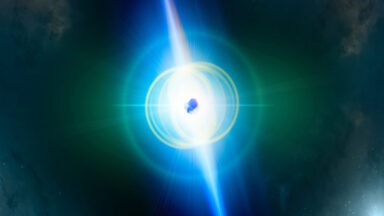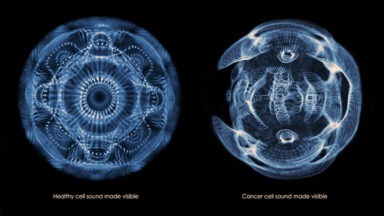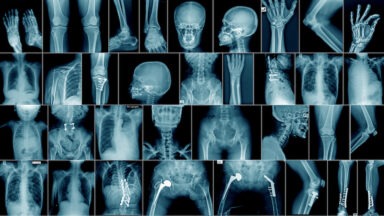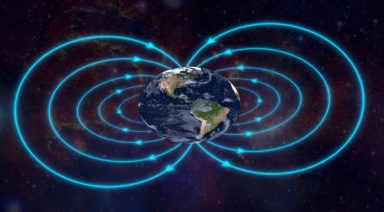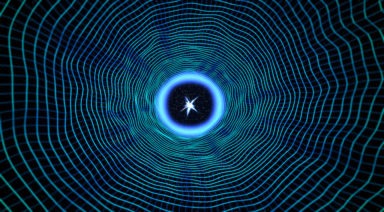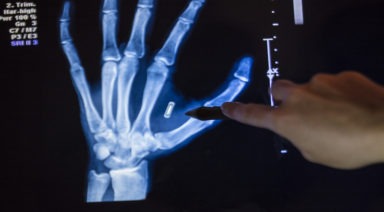Scientists to Broadcast New Message to ETs Across the Galaxy
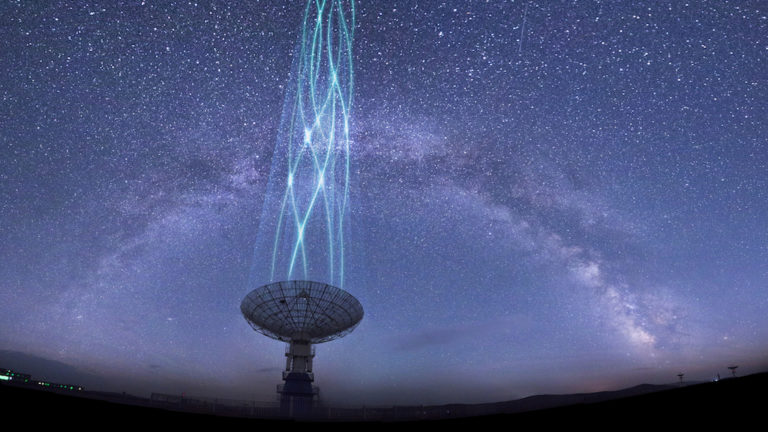
Scientists are planning a new message for any potential extraterrestrials in the universe, by sending a cosmic ‘hello’ to any intelligent life in space.
When we make contact with extraterrestrials, how will we communicate with them? What if we sent them a message showing information about Earth, humanity, and our technological capabilities?
That was the idea behind the Arecibo message in 1974, designed by Frank Drake and Carl Sagan. The now-famous message was the most powerful broadcast sent into space, from the, now defunct, Arecibo Radio Telescope in Puerto Rico. The binary message consisted of our solar system, strands of DNA, a human figure, and chemicals related to Earth, among other things.
Now, nearly 50 years later an international team of researchers introduced a new message intended for extraterrestrials. The team, led by Jonathan Jiang of NASA’s Jet Propulsion Laboratory, felt it was time to update the Arecibo message since we have come so far technologically since 1974.
The proposed message dubbed “the beacon in the galaxy” will include some similar information as Arecibo, including, “[B]asic mathematical and physical concepts to establish a universal means of communication followed by information on the biochemical composition of life on Earth, the Solar System’s time-stamped position in the Milky Way relative to known globular clusters, as well as digitized depictions of the Solar System, and Earth’s surface.
“The message concludes with digitized images of the human form, along with an invitation for any receiving intelligences to respond.”
But how will they transmit the message into space? The Arecibo Radio Telescope collapsed in December 2020.
The researchers propose using the Chinese Five-hundred-meter Aperture Spherical Telescope, also known as the “FAST” telescope. The FAST telescope is larger than Arecibo and its performance and sensitivity are higher than any other radio telescope in existence.
The SETI Institute’s Allen Telescope Array in California could also be used, but the main problem with both telescopes is they are “receive only” and can not yet transmit messages. Though their research team argues both satellites could be upgraded to send messages with new cutting-edge technology.
“If so profound a goal as communication with alien civilizations is to be realized the powerful tools of fast and data must be paired with an equally well designed and constructed message to transmit.”
This thinking is in line with many experts in space and the search for extraterrestrial life including Harvard professor Avi Loeb, who, when talking about the concept of intelligent life in the universe and how we should look for it, said,
“Well, the most important thing for us is to recognize the possibility that we are not alone and might not be the smartest kid on the block, and what that means is you have to keep your eyes open, rather than assume that we are unique and special and that there is nothing out there,” he said. “It’s sort of like closing yourself off at your home and not looking through the window, — if you do that you would never recognize that you have neighbors, but that will not make the neighbors go away. Just like the fact that philosophers who didn’t look through the telescope of Galileo didn’t make the sun go around the Earth — they didn’t look, they remain ignorant, and the Earth continues to move around the Sun. Reality doesn’t care whether we ignore it or not.”
There is no timeline yet for when “the beacon in the galaxy” could be transmitted, but as Jiang told Scientific American, “[T]his is an invitation to all people on Earth to participate in a discussion about sending out this message… we hope, by publishing this paper, we can encourage people to think about this.”
What's Sending These Mystery Signals From 4,000 Lightyears Away?

A mysterious repeating radio signal from space has been detected that scientists have not seen before. What or who is sending this signal?
Scientists have detected a radio signal from somewhere out in deep space some 4,000 light-years away.
The signal pulsed every 18 minutes and 18 seconds, for 30 to 60 seconds — every time, 18 minutes and 18 seconds. It did this for three months then it stopped. Scientists assume it is a naturally occurring rotating object that, like a lighthouse shining its beacon, will send what appears to be a repeating signal.
But Natasha Hurley-Walker, whose study into this repeating signal was recently published in the journal Nature told Vice, “[T]here are no models that produce such bright radio emission from two objects in orbit with each other, with such precision, and any that would produce any kind of radio waves would also produce X-ray emission, which we don’t see.”
Some think this might be coming from a highly magnetized star called a magnetar. So what does this all mean? Astronomer and Gaia News contributor Marc D’Antonio weighed in on the subject.
“Maybe this strange signal is some weird kind of magnetar that is rotating, but we’re not used to seeing it rotate every 18 minutes, that means a rather slow rotation. So, this is kind of weird, it’s something that doesn’t match any model that we know, and I think it takes us down a new research path to try to figure out just what it is we’re looking at,” D’Antonio said.


